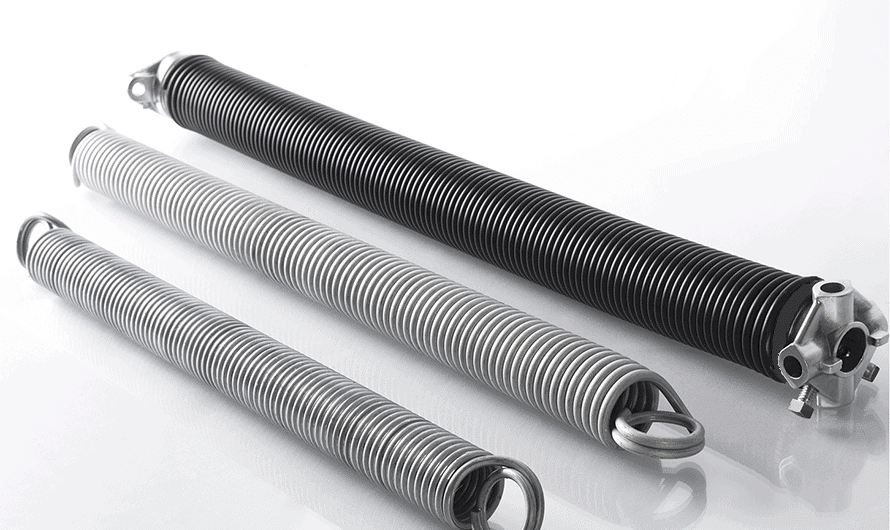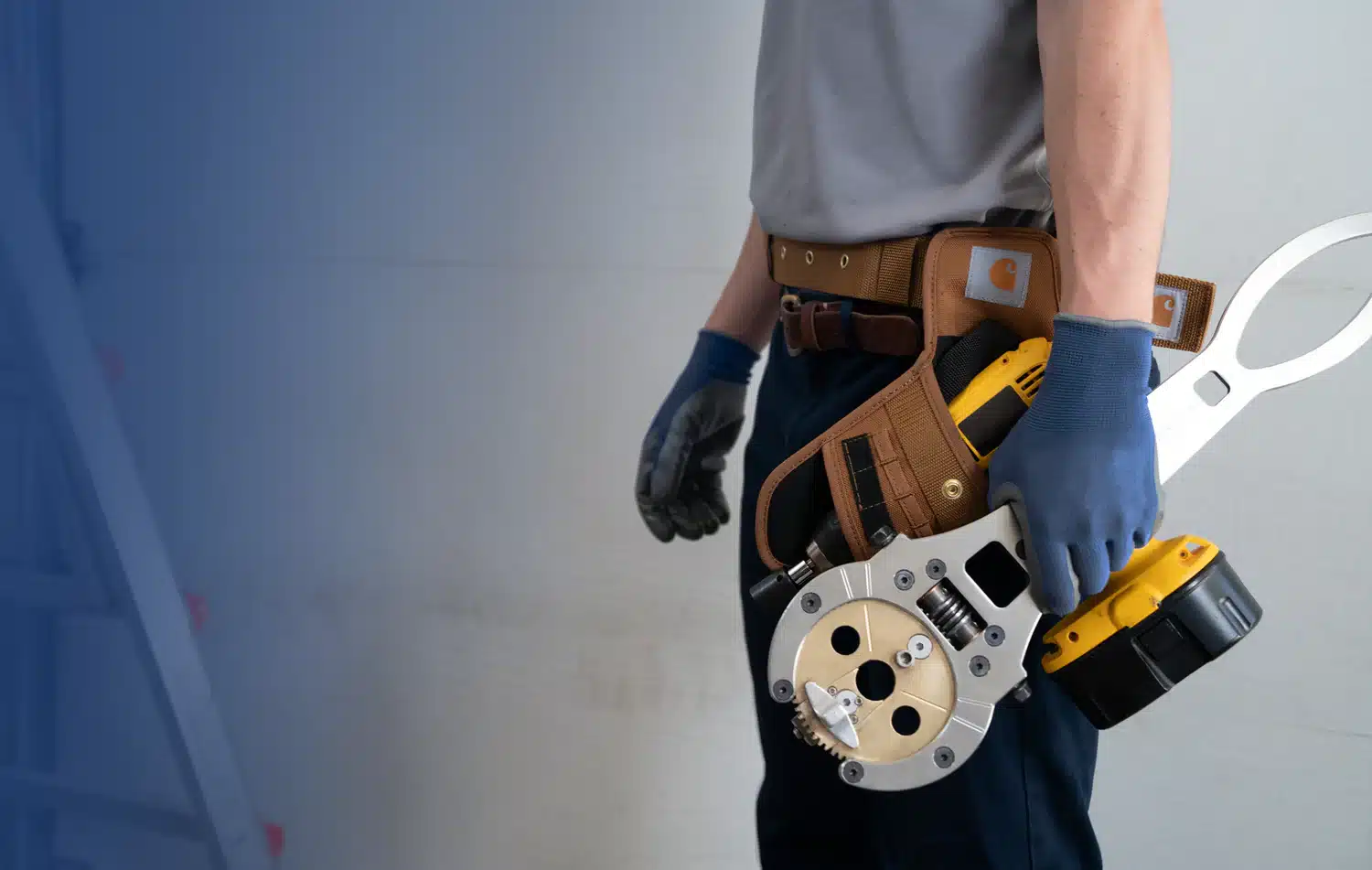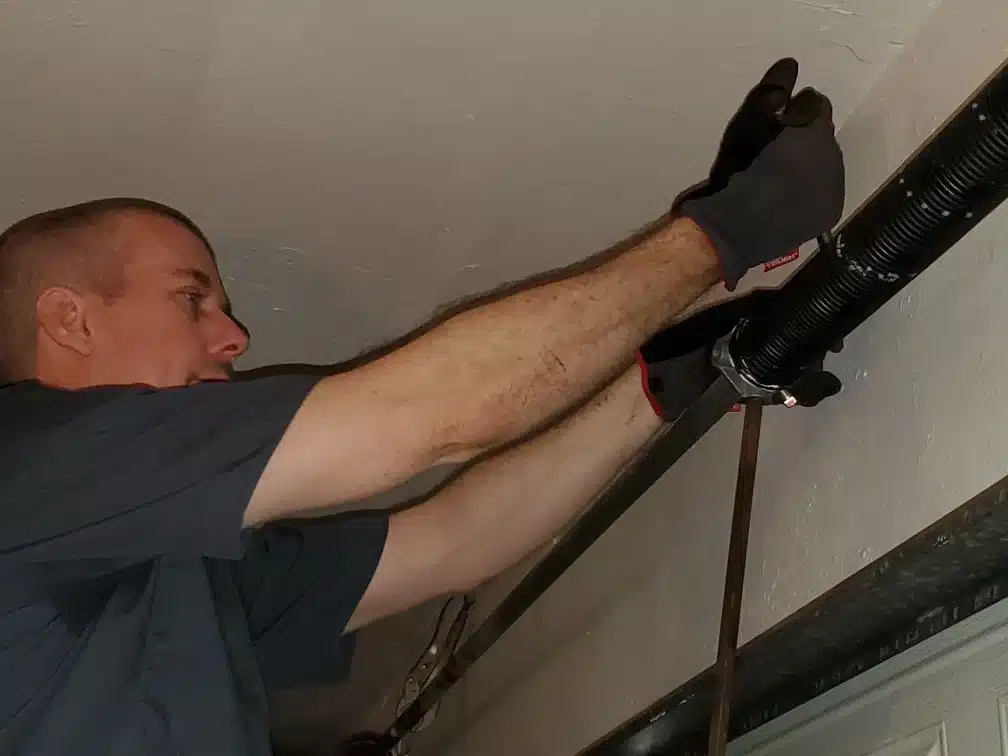A garage door is more than just a barrier between your vehicle and the outside world; it’s a complex system of various components working together seamlessly. Among these components, garage door springs play a crucial role in ensuring smooth operation and safety. Understanding these springs is key to maintaining a functional and secure garage door.
Today, we delve into the heart of garage door maintenance: measuring garage door springs. If you’ve ever wondered how to measure garage door springs accurately, you’re in the right place. We’ll walk you through the process step by step, ensuring you have the knowledge and confidence to tackle this essential task. Say goodbye to the mystery surrounding garage door springs – let’s dive in and empower you to take control of your garage maintenance.

Understanding Garage Door Springs
The Role of Garage Door Springs
Garage door springs are the unsung heroes of your garage door system, tirelessly working behind the scenes to facilitate its smooth operation. These springs serve as the muscles of the mechanism, bearing the weight of the door and providing the necessary force to lift and lower it. Without the assistance of springs, operating a garage door manually would be an arduous task, if not entirely impractical.
There are primarily two kinds of garage door springs: torsion springs and extension springs. Torsion springs are usually installed above the door and coil as the door closes, storing energy to be unleashed when the door is opened. On the other hand, extension springs are usually installed along the horizontal tracks on either side of the door and stretch as the door is lowered, providing lifting force.
It’s essential to recognize the vital role that garage door springs play in the overall functionality and safety of your garage door. These components endure significant stress with each use, making them susceptible to wear and tear over time. Understanding their function is the first step toward ensuring the longevity and reliability of your garage door system.
The Significance of Accurate Measurements
Precision is paramount when it comes to measuring garage door springs. The accuracy of these measurements directly impacts the tension and balance of the springs, which, in turn, affects the performance of the entire door system. Whether it’s for routine maintenance tasks like lubrication and tension adjustment or determining when replacement is necessary, precise measurements are crucial.
Properly tensioned springs ensure that the door operates smoothly and evenly, minimizing the risk of malfunctions or damage. Conversely, incorrect measurements can result in uneven tension, leading to issues such as jerky movements, loud noises, or even the door becoming stuck mid-operation. Additionally, over-tensioned springs pose a safety hazard, increasing the risk of the door suddenly dropping unexpectedly.
By prioritizing accuracy in spring measurements, homeowners can safeguard against these potential problems and prolong the lifespan of their garage door system. Regular maintenance, including measuring and adjusting spring tension as needed, is essential for ensuring the safety and functionality of your garage door.
Tools Required for Measurement
Essential Tools for Measuring Garage Door Springs
When it comes to measuring garage door springs accurately, having the right tools at your disposal is essential. Here’s a comprehensive list of tools you’ll need for the job:
- Tape Measure: A reliable tape measure is indispensable for obtaining precise measurements of the springs’ length and diameter.
- Winding Bars: Winding bars are necessary for safely winding and unwinding torsion springs during measurement and adjustment.
- Vice Grips: Vice grips help secure the torsion tube in place, preventing it from rotating while you work with the springs.
- Safety Glasses: Protect your eyes from flying debris or sudden spring tension releases with a pair of safety glasses.
- Gloves: Heavy-duty gloves provide hand protection and improve grip when handling springs and other components.
- Ladder: Depending on the height of your garage door, a sturdy ladder may be required to access the springs safely.
- Pen and Paper: Keep a pen and paper handy to record measurements and notes for future reference.
With these tools at your disposal, you’ll be well-equipped to measure your garage door springs accurately and safely.
Emphasizing the Importance of Safety Gear
While measuring garage door springs may seem straightforward, it’s crucial to prioritize safety throughout the process.
The substantial tension contained in these springs presents a notable risk of injury if mishandled. Thus, it’s crucial to utilize appropriate safety equipment to shield yourself from potential accidents. Safety glasses shield your eyes from any debris or sudden spring releases that may occur during measurement or adjustment. Similarly, heavy-duty gloves offer hand protection and enhance grip, reducing the risk of slips or cuts while handling springs and winding bars.
Additionally, always exercise caution when working with garage door springs, and never attempt to adjust or replace them without the necessary knowledge and experience. If you’re unsure or uncomfortable with the process, don’t hesitate to seek professional assistance to ensure the job is done safely and correctly.
By prioritizing safety and using the appropriate safety gear, you can minimize the risk of accidents and injuries while measuring your garage door springs, allowing you to complete the task with confidence and peace of mind.
Step-by-Step Measurement Process
Clear Instructions on How to Measure Garage Door Springs Accurately
- Safety First: Before starting, ensure the garage door is closed and disconnect the power to the opener to prevent any accidental activation.
- Identify the Springs: Locate the springs on your garage door. Depending on the type of springs (torsion or extension), they may be mounted above the door or along the horizontal tracks.
- Measure the Length: For torsion springs, measure the length of the spring from one end to the other, excluding the winding cones. For extension springs, measure the length of the spring when it’s fully stretched.
- Determine the Diameter: Measure the diameter of the spring using a tape measure. Be sure to measure the widest point of the spring, including any coils.
- Record the Measurements: Note down the length and diameter of each spring. It’s essential to measure each spring individually, as they may vary in size.
- Check for Tension: Use caution when handling torsion springs, as they are under high tension. Ensure the winding cones are secure and not loose before measuring.
Illustrations or Diagrams for Better Understanding
Visual aids can greatly enhance understanding, especially when it comes to complex tasks like measuring garage door springs. Here are some helpful illustrations to accompany the step-by-step process:
- Illustration 1: An annotated diagram of a garage door system, highlighting the location of torsion and extension springs.
- Illustration 2: A visual representation of how to measure the length of a torsion spring, with clear labels indicating the starting and ending points for measurement.
- Illustration 3: A diagram demonstrating the proper technique for measuring the diameter of a garage door spring, including where to place the tape measure for accurate results.
- Illustration 4: Safety precautions and reminders depicted visually, such as wearing safety glasses and gloves, and securing the winding cones before measurement.
By providing clear instructions accompanied by visual aids, homeowners can confidently measure their garage door springs accurately, ensuring proper maintenance and safety precautions are taken throughout the process.

Common Mistakes to Avoid
Identifying Potential Errors in Measurement:
When measuring garage door springs, several common mistakes can compromise the accuracy of your measurements. By being aware of these pitfalls, you can avoid errors and ensure that your garage door springs are measured correctly. The following are some crucial errors to avoid:
- Incorrect Measurement Points: Failing to measure from the correct starting and ending points of the spring can lead to inaccurate results. Ensure you’re measuring the full length of the spring without including any additional components, such as the winding cones.
- Failure to Measure Each Spring: Garage door systems often have multiple springs, and it’s essential to measure each one individually. Neglecting to measure all the springs can result in uneven tension and performance issues.
- Neglecting Safety Precautions: Underestimating the importance of safety gear and precautions when working with garage door springs can have serious consequences. Always wear safety glasses, gloves, and other protective equipment to prevent injury.
- Ignoring Warning Signs: If you notice signs of wear or damage on your garage door springs, such as rust, fraying, or gaps between coils, it’s crucial to address these issues promptly. Ignoring warning signs can lead to spring failure and potentially dangerous situations.
Offering Tips to Ensure Precision and Safety:
To ensure precision and safety when measuring garage door springs, consider the following tips:
- Use Proper Tools: Invest in high-quality tools specifically designed for measuring and working with garage door springs. Using the right tools will not only improve accuracy but also enhance safety.
- Double-Check Measurements: Always double-check your measurements to ensure accuracy before making any adjustments or replacements. Even a small measurement error can have significant consequences for your garage door system.
- Follow Manufacturer Guidelines: Refer to the manufacturer’s guidelines or consult a professional for specific instructions on measuring and adjusting your garage door springs. Following recommended procedures will help ensure optimal performance and safety.
- Regular Maintenance: Implement a regular maintenance schedule for your garage door system, including spring inspection and measurement. Regular maintenance can help identify issues early and prevent costly repairs or replacements down the line.
By avoiding common measurement mistakes and following these tips for precision and safety, you can maintain a functional and safe garage door system for years to come.

Frequently Asked Questions on How to Measure Garage Door Springs
How can I determine whether my garage door springs need to be changed?
Signs that your garage door springs may need replacing include:
- Grinding or squeaking sounds are made when the door is opened or closed.
- Difficulty smoothly opening or shutting the door.
- Visible wear or damage to the springs, such as rust or gaps between coils.
- The door is unevenly balanced or appears to be sagging on one side.
Can I measure garage door springs without professional help?
While it’s possible to measure garage door springs yourself, it’s essential to prioritize safety and accuracy. If you’re unfamiliar with garage door mechanics or uncomfortable working with high-tension springs, it’s best to seek professional assistance to ensure the job is done safely and correctly.
What are the consequences of incorrect spring measurements?
Incorrect spring measurements can lead to various issues, including:
- Uneven tension, causing the door to operate inconsistently or become stuck.
- Premature wear and tear on the springs, leading to potential failure.
- Safety hazards, such as the door suddenly dropping unexpectedly due to over-tensioned springs.
Are there different types of garage door springs?
Yes, there are two main types of garage door springs:
- Torsion Springs: Typically mounted above the door, torsion springs store energy by winding up as the door is closed, providing lifting force when the door is opened.
- Extension Springs: Installed along the horizontal tracks on either side of the door, extension springs stretch as the door is lowered, counterbalancing the weight of the door.
How often should I measure my garage door springs for maintenance?
It’s recommended to inspect and measure your garage door springs at least once a year as part of routine maintenance. Additionally, if you notice any signs of wear or performance issues with your garage door, such as uneven operation or excessive noise, it’s essential to address them promptly by measuring the springs and assessing their condition. Regular maintenance helps ensure the safety and longevity of your garage door system.
Conclusion
Throughout this guide, we’ve explored the essential aspects of measuring garage door springs accurately. From understanding the role of garage door springs in the mechanics of your door system to identifying potential errors and offering tips for precision and safety, we’ve provided comprehensive guidance to empower you in maintaining your garage door.
Now that you have this knowledge, it’s time to apply it. Regular maintenance of your garage door springs is vital for ensuring the safety and functionality of your garage door system. By applying the techniques and precautions outlined in this guide, you can confidently measure your garage door springs and address any issues before they escalate into costly garage door repairs or safety hazards.
Are you still curious about garage door springs and their maintenance? Want to learn more about common questions and concerns regarding garage door springs? Keep reading to explore detailed answers to frequently asked questions, ensuring you have all the information you need to become a garage door maintenance expert.
Continue your journey to garage door mastery by delving into our Q&A section below for detailed answers to common questions and concerns. Let’s ensure your garage door remains safe, functional, and reliable for years to come.



